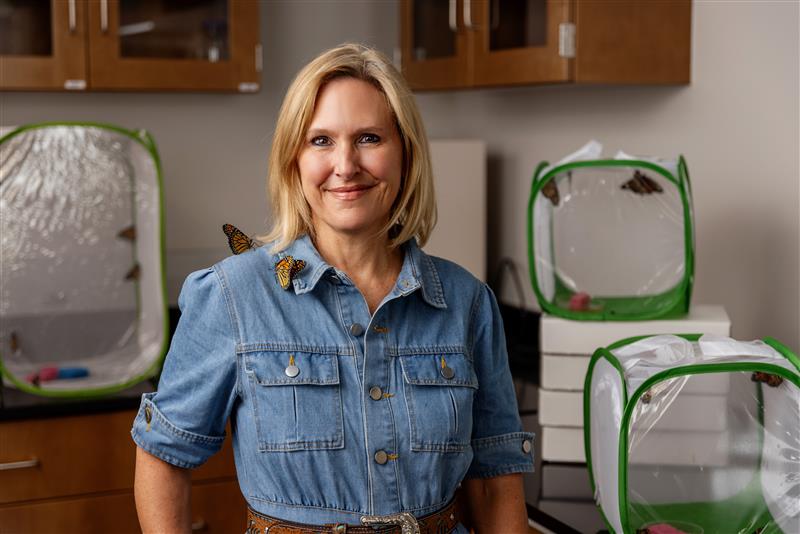By April Reese
University of Georgia
After a long day at school, most kids head straight for the refrigerator or the cupboard when they get home. But are the after-school snacks they're grabbing the best choices?
"Students tend to reach for cookies and chips," said Jan Baggarly, an extension service agent with the University of Georgia College of Family and Consumer Sciences. "And with roughly 7 million American students on their own at home after school, that's a lot of chips."
Eating healthy
To help children make healthy snack choices, Baggarly recommends parents keep plenty of healthy snack alternatives on hand.
"A nutritious snack provides food from at least one of the Food Guide Pyramid food groups and, at the same time, isn't too high in fat, sugar or salt," Baggarly said.
Children are growing fast. And they're usually more active than adults. So they have to eat more calories and more often, she said, to supply the energy they need to stay healthy and active.
"Often children don't get all the nutrition they need from eating regular meals at breakfast, lunch and dinner, so snacks become essential," she said. "Making healthy snacks available for kids after school is a great way to keep their energy levels up and not spoil their dinner. Snacks should be planned for and not something that just happens."
Attack alternatives
But which snacks are the best choices? Baggarly offers these suggestions: cheese and crackers, peanut butter and jelly sandwiches, yogurt, hard-boiled eggs, cold cereal, fresh and dried fruits, raw vegetables and dips made from low-fat ingredients, popcorn, graham crackers and vanilla wafers.
"Cookies don't have to be eliminated from the list," she said. "Just make sure they're made using low-fat ingredients."
One way to reduce fat in cookies is by using applesauce in place of shortening when making oatmeal cookies. This alteration alone cuts the fat by one-third.
After-school beverages can also add extra calories to a child's diet.
"After-school snacks should not be accompanied by sugar drinks like Kool-Aid, soft drinks or those labeled as fruit drinks," Baggarly said. "Fruit juices made from real fruit will say so on the label."
Milk is an excellent after-school choice. "And today you can buy it in a variety of flavors, which helps its appeal," she said.
Food safety
As with all food preparation, after-school foods should be made safe to eat.
"Parents need to establish safe food-handling practices and set guidelines on what snacks their children can prepare," Baggarly said.
For safety's sake, children should be taught these safe- food practices:
* Keep counters and tables clean. (Place books and book bags somewhere else.)
* Always wash hands before making or eating a snack. And use clean plates and utensils.
* Wash fruits and vegetables before you eat them.
* Put refrigerated items back in the refrigerator after your snack is ready.
* Reheat leftovers thoroughly until steamy.
Encourage children to eat at the kitchen table, too, Baggarly said.
"There will be less chance of choking, and they will be more aware of what and how much they're eating," she said. "It will also cut down on spills."
Let kids pick
Baggarly says involving children in shopping and preparing healthy snack alternatives will aid in the eating frenzy that follows the bus home every day.
"This will help them feel involved, and they may start making healthier choices when you're not around, like during the school day," she said.






